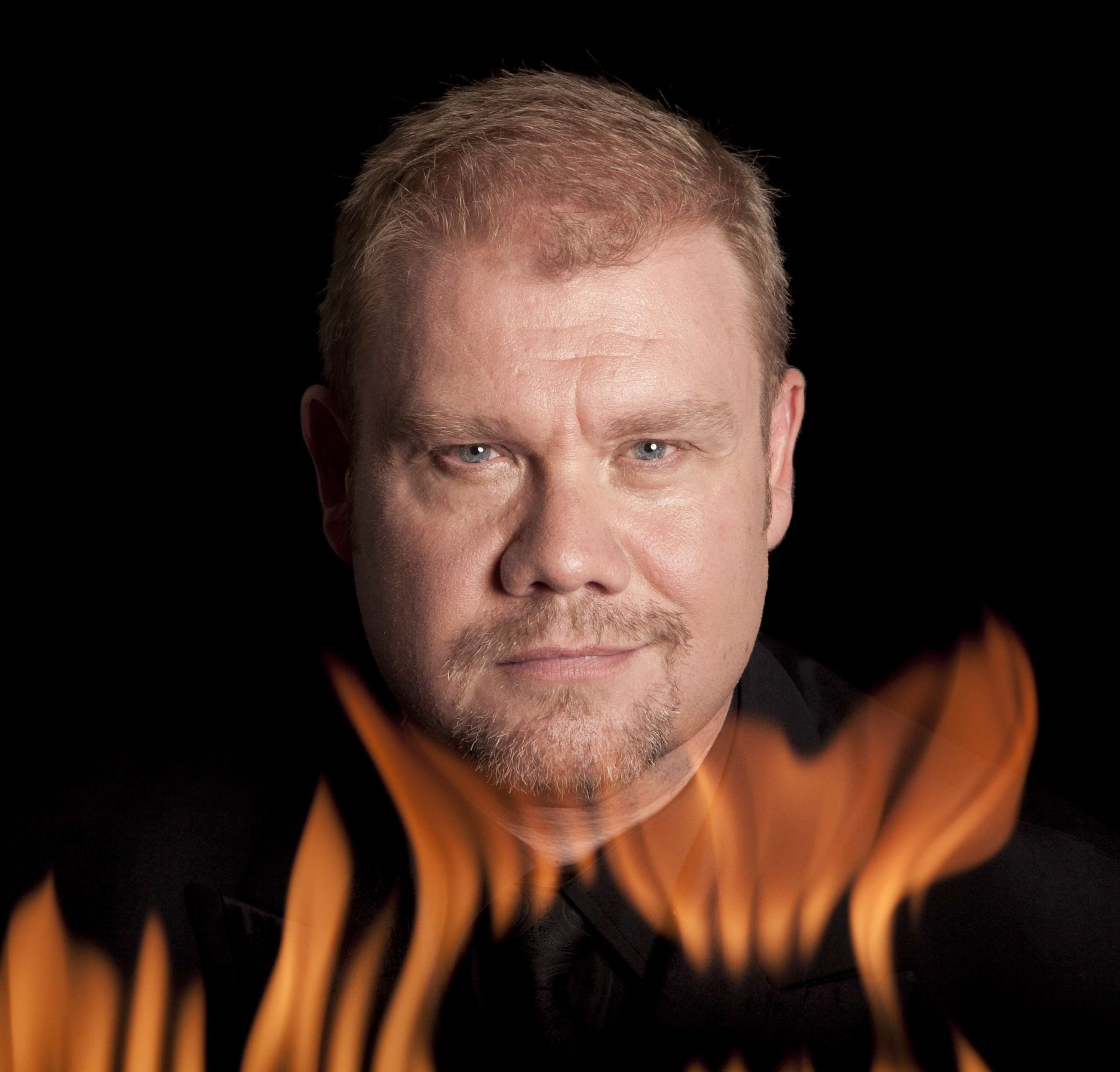|
Back
Opera Austrialia Ring preview: Part II
11/13/2013

S. Skelton (© Luisa Tomasetti)
At the dress rehearsal (11 Nov ahead of 20 Nov opening) for Die Walküre, football stadium cheers for the conductor and deafening applause for the orchestra are sure signifiers of an evening of quality music making. Audience patience was requested as things may go awry but performance in all but name, with full-voiced singing and a cast who threw themselves into the realisation of Wagner’s convoluted plot.
As in Das Rheingold, the set is a voluminous black box, the front “curtain” a stark black wall past which we see into the forest represented by a wooden shack dusted with snow and hinting at Valhalla through a massive circular opening in the ceiling. Set Designer Robert Cousins and Lighting Designer Damien Cooper have captured a sense of desolation and primitive fight for survival. The deep blackness surrounding the action allows characters, set, and even the charmed sword “Nothung” to be thrust into brightness by brilliant white light.
Snow flurries through Act One turn to gently fluttering spring leaves as the lovers declare themselves and realise the dreadful task of freedom fighting which lies ahead. The costumes are simple: Siegmund in winter hunting garb and Sieglinde firstly in country-style wool and tweeds and latterly in hooded fur coat for her flight from Hunding. This brings a sense of modern day realism to the staging and the audience is persuaded into a kinship with these would-be lovers. Wagner leaves judgement of their incest to Fricka who, seeking to preserve the sanctity of Sieglinde’s marriage, rants against Wotan. Director Neil Armfield allows Seiglinde to proffer some signs of resistance to her brother but will dwell on this aspect in the second act when she curses her fragility. Hunding, sung by Jud Arthur, is as testosterone-charged, threatening and dark a force as could be imagined. His rival Siegmund (Stuart Skelton) is similarly powerful but it is his glances at Sieglinde and their furtive touching of hands which gives us an insight into what true love might be. Their flight from the forest, across and around the blackness of the stage, is compelling viewing and as the act concludes, the audience senses their hope for freedom and love.
Act Two offers our first view of the imposing interior of Valhalla. Its glossy white, spiral ramp ascends from stage into the enormous circular opening above. Surrounded by a halo of white lights, the structure is reminiscent of a ship with deck railings or an imposing hotel architectural void. Referencing the museum animals from Das Rheingold, stuffed creatures of all descriptions are suspended in the spiral. Whether this is a reminder of the delicate and failing balance of the world’s resources or a set of trophies showing the god’s power, remains an enigma. Wotan sung by Terje Stensvold is cloaked in animal fur – perhaps a symbol of wealth and power, possibly a connection to the primeval world of the forests.
Brünnhlide, sung by Susan Bullock, is a spikey-haired wild child dressed in battlefield fatigues who vigorously dominates the space she inhabits. She flirts with and caresses her father, laughing and calling her battle cry, demonstrating her adoration.
Fricka, sung by Jacqueline Dark, is the glamorous trophy wife. Yet she is powerful and determined as she harangues and threatens her husband, reducing him to cowering to avoid her wrath. She wears fur and gold jewellery befitting her status and her interactions with other characters, most noticeably in her death-stare stand-off with Brünnhilde are imperious, She is obviously sure of her position in the hierarchy.
Siegmund’s death is made more devastating as Hunding dips into a pool of blood, rips open his clothes and smears his chest with the gory symbol of his victory. Sieglinde’s horror and desperation are a powerful counterpoint to this striking vision. Brünnhilde’s moral dilemma and defiance of her father are portrayed with wild dashing around the stage, her looks of unabashed terror at her own inner turmoil signal her change of heart and she sees clearly that we are all to be taken on an inevitable ride into furious wrath and retribution.
The third act opens in a scene reminiscent of the Rhine which began the cycle. We see a great crowd of people wandering, struggling against the flow, collapsing, and from far above the battle cries herald the Valkyries, riding to collect fallen heroes. On swings of rope and wood, from twenty or thirty metres in the air, they descend in a transfixing scene in which music and stagecraft blend into one. Scooping bodies, they attach them to the swings and they are hauled into the enormous void above.
The final scene is spare: on the empty black stage, Brünnhilde and Wotan circle each other variously touching and tearing away, always caught in the brilliant white light until the final moments when on a raised bier Wotan encircles his sleeping daughter in fire. Orange flames against the deep black of the set are an indelible image as the curtain falls.
This production of Die Walküre is every bit as thought-provoking as that of Das Rheingold.
Gregory Pritchard
|